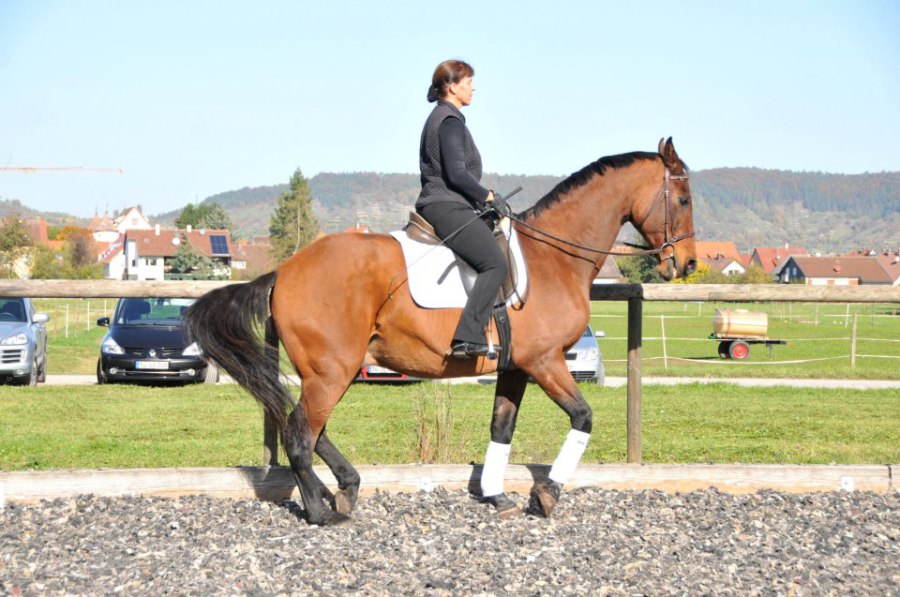My principles in working with horse-human pairs

Teaching horses
‚Training‘ a horse is possible only on a basis of mutual trust.
The first step then is to develop and strengthen trust and to work in such a way with the horse that the trust can continuously deepen.
I try very hard to understand the horse – how does it tick, what is its basic attitude towards humans and life, what are the fundamental structures of its character, what are learned reaction patterns from previous experiences?
It is up to the rider to set the task for the horse in such a way that it can complete it joyfully and successfully. If the horse cannot perform something, I look for the reason.
- Is it a part of the basic training that is not yet sufficiently understood or secured?
- Can the horse physically or mentally fulfill the task at all? Is the horse's current condition conducive to it?
- How can I help more effectively?
This approach, combined with mindfulness, mutual respect, and consistency, encourages the horses to willingly say 'yes' to my demands, and so they almost always come out of our shared activities with a lot of praise."
After all, learning is only possible - and this applies to both two-legged and four-legged creatures alike! - when one is relaxed and cheerful, not under burdensome and overwhelming stress and pressure. From this, both physical and emotional balance can be achieved. Then, increased demands on strength, endurance, and task complexity are possible without the horse being brought into unhealthy movement patterns.
In addition to classical dressage training, other forms of time spent together are also very meaningful, such as liberty work - immensely beneficial for building trust - or simply exploring the outside world together.
Ride your horse happy
Nuno Oliveira
This is a wonderful guideline I like to follow.

Teaching riders
I meet my students where they are. My goal is to show them effective ways to continuously improve their riding and to accompany them on this often very individual journey
This joyful atmosphere, which is so important for the horses to support them in learning and developing a cultivated collaboration, is equally important for the riders.
I meet my students where they are. My goal is to show you effective ways to continuously optimize your collaboration with your horse and to accompany you on this often very individual journey.
The goal is a relaxed seat and a subtle and precise use of aids
Teaching is also always about imparting tools so that you can develop your own questions and problem-solving skills
Mistakes, as well as detours and sometimes even wrong paths, are in this context a good learning and improvement opportunity. This develops a riding culture that draws joy from the shared journey of horse and rider and does not just focus on 'end results'.
This then is the basis for riding in harmony, joy and lightness.
